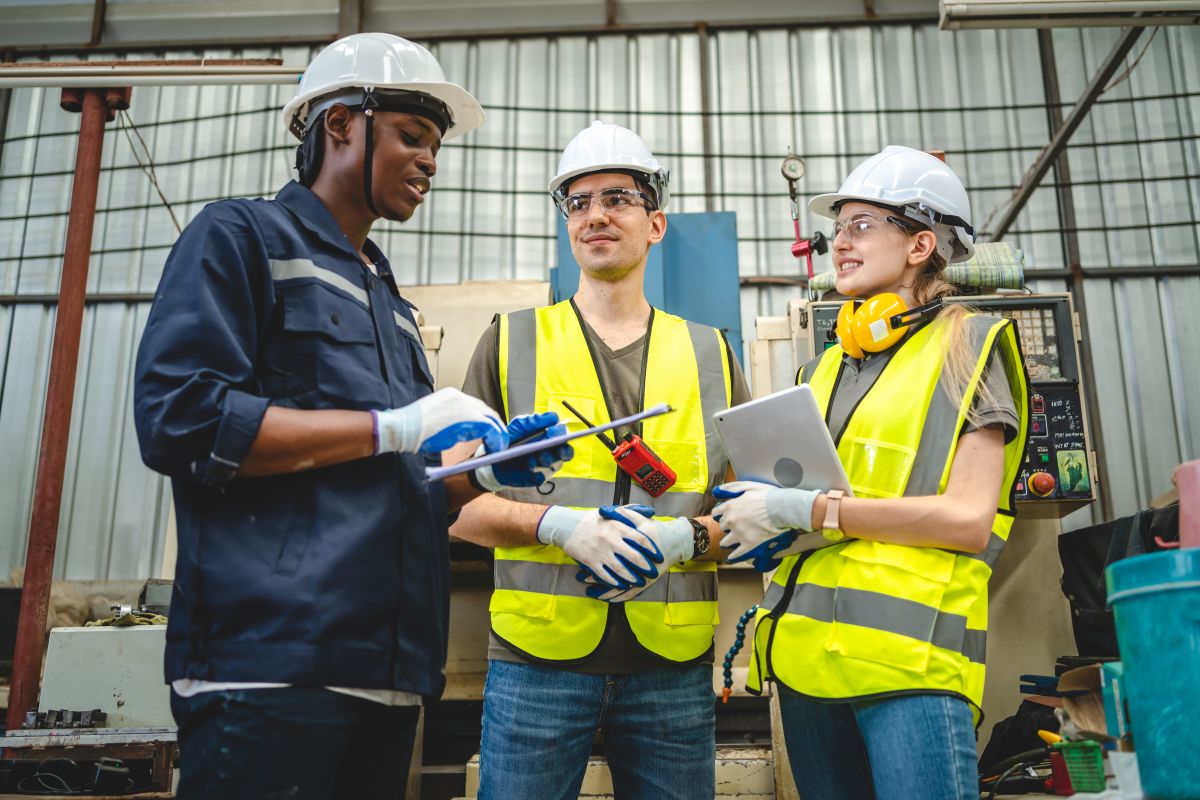
Emergency Response Training with the Support of a Video Production Company
Emergencies can unfold without warning. For workplaces across industries, preparedness is not simply a matter of compliance but of safety, efficiency, and resilience. From fires and hazardous material spills to sudden equipment failures and natural incidents such as earthquakes, these scenarios demand a structured and informed response. Training through realistic and well-produced video content has become an essential component in building this capability. A professional video production company can create training videos that go beyond generic instruction. By combining narrative structure with visual precision, these productions transform emergency preparedness into immersive, scenario-driven learning. This is not simply training, it is an investment in preparedness that strengthens teams and improves outcomes. Let’s take a look at the ways crisis response and emergency preparedness training videos can be designed to achieve these goals.
Scenario-Based Training Modules
Scenario-based training provides a practical and immersive approach to preparedness. These modules recreate realistic crisis situations so that employees can experience simulated emergencies in a controlled environment.
For example, a video series might follow a recurring character such as “Alex the First Responder,” guiding viewers through different scenarios. This continuity creates a narrative thread that builds engagement over time, encouraging teams to return for subsequent episodes. Situations could range from workplace fires to hazardous material incidents or earthquake drills, each presented in a way that reflects real operational conditions.
The aim is to combine cinematic realism with clear procedural guidance. A high-quality scenario-based video enables learners to mentally rehearse their response, improving instinctive reactions in actual emergencies. From production planning to execution, a professional video production company can incorporate sound design, accurate recreations of environments, and authentic role-playing to maximise realism and retention.
Step-by-Step Response Guides
Effective crisis response depends on a structured approach that can be easily learned and recalled under pressure. Breaking the process into clear, defined stages helps ensure consistency and reduces the likelihood of error. Training videos that follow this structure can make these stages intuitive for trainees.
Key stages often include:
- Initial assessment: Evaluating the situation quickly to determine the severity and required response.
- Communication: Ensuring accurate information is shared with all relevant personnel.
- Evacuation: Safely relocating people away from danger zones.
- Triage: Prioritising attention and resources to the most urgent needs.
- Debrief: Analysing the response to improve future procedures.
By presenting these steps visually and consistently, training videos create a reliable framework that supports effective decision-making during emergencies. This clarity helps teams respond with confidence in real-world situations.
Behind-the-Scenes of Crisis Simulations
Documentary-style videos that show the process of producing crisis simulations add depth to training programmes. These behind-the-scenes features can explain how scenarios are developed, the safety protocols observed during filming, and the expert input required to ensure accuracy.
Such content enhances transparency and provides learners with insight into the preparation that goes into crisis training. It reinforces the value of the training itself and builds confidence in the procedures presented. These mini-documentaries could also create anticipation for forthcoming training modules, maintaining engagement over time.
Interviews with Experts and Survivors
Interviews add a human element to crisis preparedness. Featuring emergency response professionals, crisis managers, and individuals who have lived through emergencies, these segments provide perspectives that combine expertise with lived experience.
A recurring element, such as a signature question posed in every interview, could provide continuity and become a unifying thread for the series. These personal narratives are powerful in illustrating why training matters. They connect abstract procedures to real-life consequences and highlight the importance of preparedness beyond the theoretical.
A professional video production company can ensure these interviews are filmed in a way that balances emotional impact with clarity, using visual and sound techniques to make each segment a learning experience in its own right.
Tech Tools in Crisis Preparedness
Technology has transformed how organisations prepare for emergencies. From simulation systems to aerial reconnaissance, technology provides realistic training opportunities and improves situational awareness. Videos that clearly illustrate these tools enhance understanding and appreciation of their value.
Examples of technology in crisis preparedness include:
- Drone surveys: Capturing real-time aerial data for situational assessment.
- Simulation software: Creating realistic scenarios for immersive training.
- Secure communication systems: Maintaining reliable information flow during a crisis.
- Geospatial mapping tools: Pinpointing hazards and safe zones.
By explaining these technologies in a structured format, videos help viewers understand both their practical applications and limitations. This ensures preparedness training remains grounded in realistic expectations and operational capability.
Common Mistakes and Lessons Learned
Learning from mistakes is a vital element of emergency preparedness. Video-based training that illustrates errors can reinforce good practices by showing the consequences of poor decisions. This method ensures trainees are better equipped to recognise and avoid similar pitfalls.
Frequent mistakes include:
- Communication breakdown: Unclear or delayed information transfer.
- Misjudged risk: Failing to correctly assess hazards.
- Inadequate evacuation procedures: Poor planning or execution.
- Overlooking post-crisis recovery: Neglecting the importance of mental health and debriefs.
Presenting these scenarios visually allows training to move beyond theory, providing a clear depiction of potential failures and their resolutions. This not only enhances knowledge retention but also strengthens the readiness of teams in real emergencies.
Crisis Preparedness for Specific Industries
Each industry has unique risks and requirements in emergencies. Training videos that address specific sectors such as healthcare, education, hospitality, manufacturing, and others allow for tailored crisis preparation.
For instance, healthcare-focused videos may explore patient evacuation protocols, while manufacturing training could centre on equipment failure or hazardous material handling. Presenting these as distinct mini-series within a larger training programme gives employees targeted, relevant knowledge while maintaining a consistent overall structure.
The production of industry-specific modules demands a deep understanding of both the operational environment and the requirements of effective training delivery. This is an area where a professional video production company can combine subject matter expertise with visual storytelling techniques to produce high-impact training resources.
Post-Crisis Recovery and Mental Health
Crisis preparedness does not end when the immediate incident is resolved. Post-crisis recovery and mental health are integral to sustaining resilience.
Training videos addressing these aspects can focus on team debriefs, coping strategies, and psychological support. They may include interviews with mental health professionals and examples of recovery protocols. This content provides an important human element, reinforcing that preparedness extends beyond physical safety to include emotional wellbeing.
Such productions require sensitivity and accuracy, ensuring the subject matter is treated with care and credibility. This is another area where professional production adds significant value by delivering content that is both informative and respectful.
The Importance of Structured Crisis Training
Emergency preparedness is not static. It requires continuous training, reflection, and adaptation to evolving conditions and risks. Scenario-based modules, step-by-step guides, behind-the-scenes insights, expert interviews, technological spotlights, lessons learned, and industry-specific training form a holistic approach to preparedness.
A professional video production company can bring together these elements into a cohesive training programme that enhances preparedness across an organisation. Through carefully produced and consistent video content, preparedness is transformed from an abstract concept into a structured, accessible reality.
This approach ensures that teams are ready, informed, and confident in their ability to respond effectively when emergencies arise.
Crisis preparedness training works best when grounded in realistic, structured scenarios. Video can translate those scenarios into a repeatable resource that supports readiness. Get in touch today to explore how Sound Idea Digital can help you begin developing your next training video.
We are a full-service Web Development and Content Production Agency in Gauteng specialising in Video Production, Animation, eLearning Content Development, Learning Management Systems, and Content Production.
Contact us for a quote. | enquiries@soundidea.co.za | https://www.soundideavideoproduction.co.za| +27 82 491 5824 |

